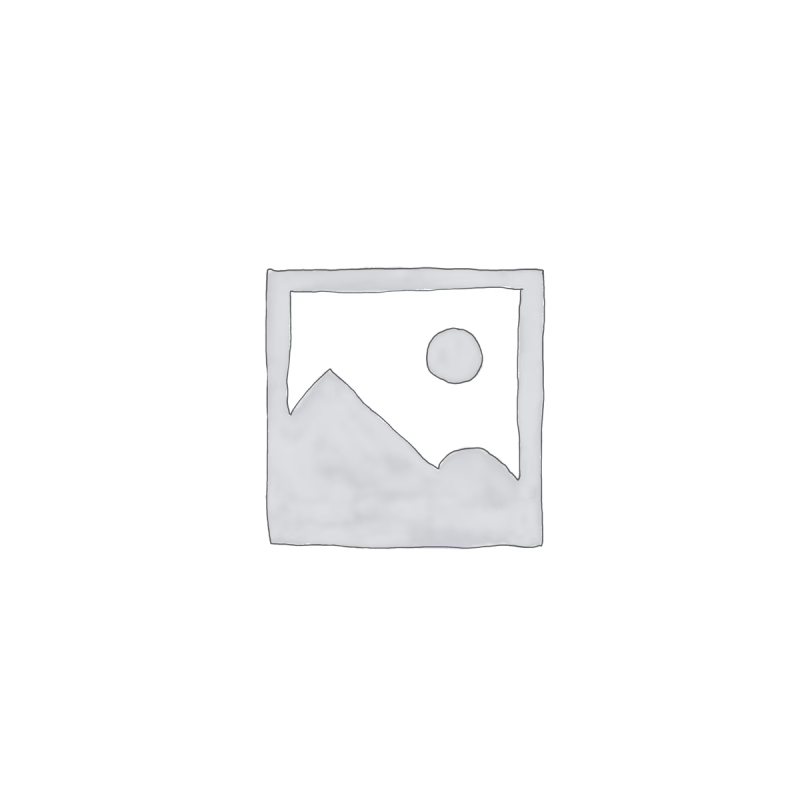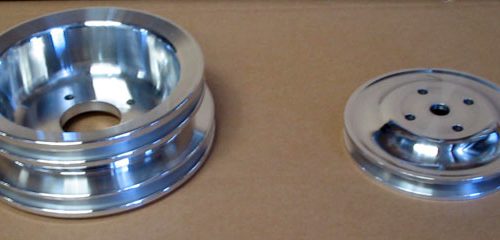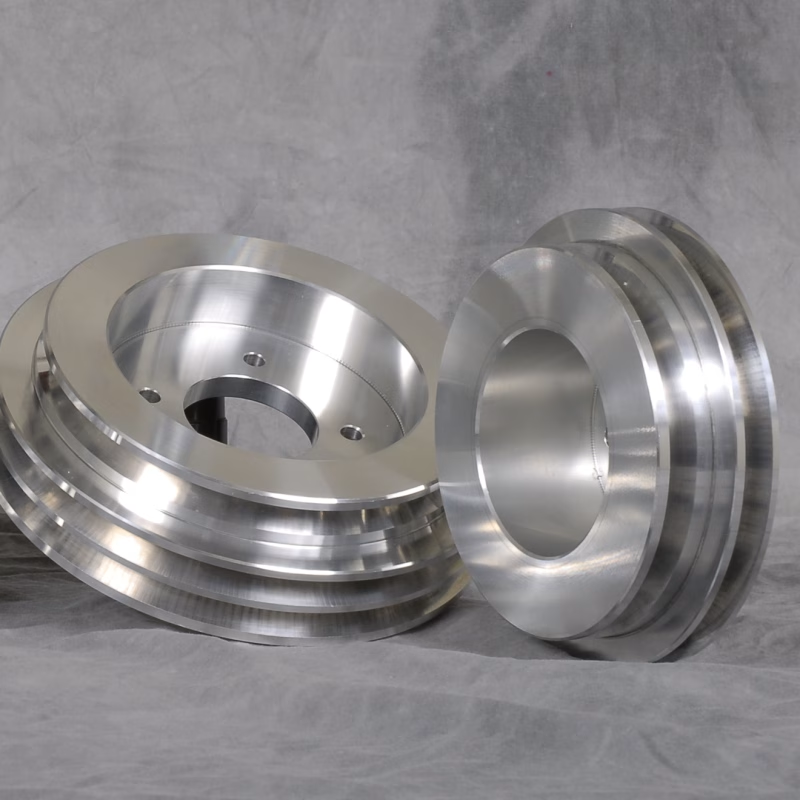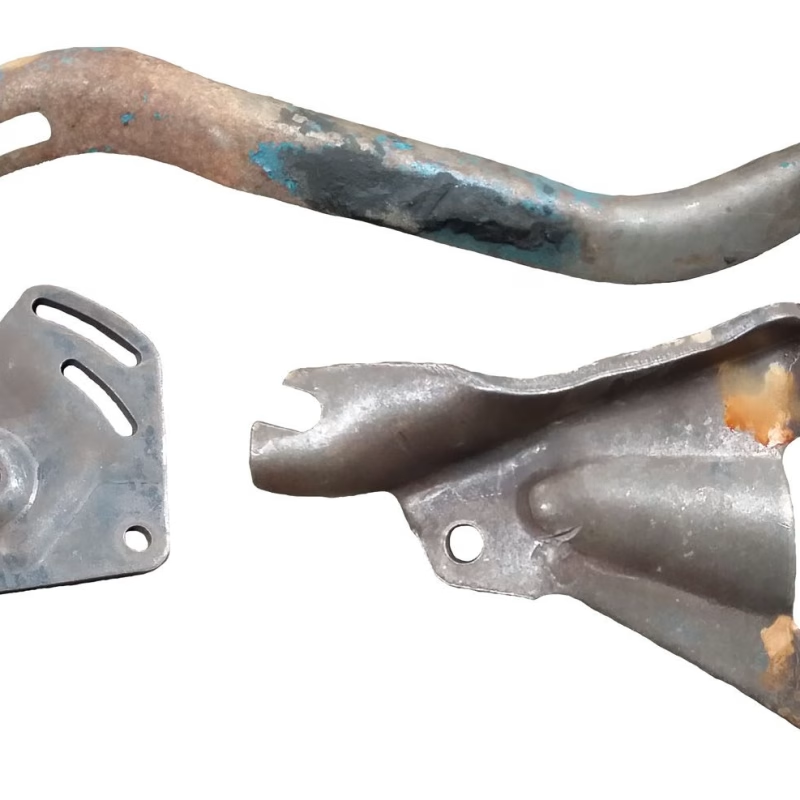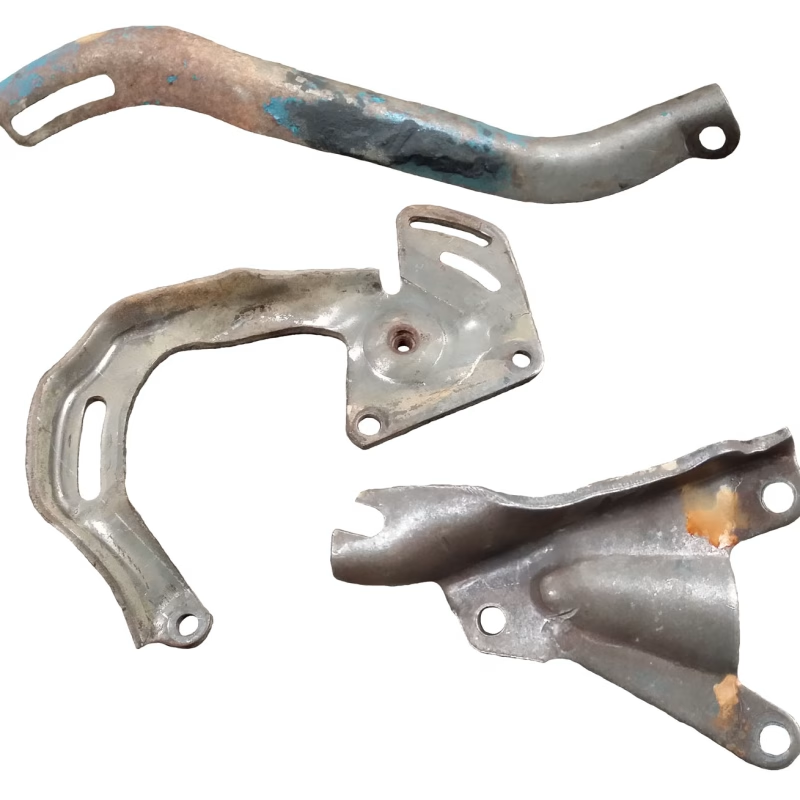Pulleys and Brackets
There are several variations of stock pulley and bracket assemblies in the accessory drive system that can be confusing to someone not familiar with Cadillac engines. Below, you will find detailed descriptions of these configurations, as well as which setups are compatible with what, and what parts have to be swapped as a group.
The ’68-’73 472/500s have a 3 groove crank pulley, and all but the ’70 have a 2 groove water pump pulley. The stock smog pump belt configuration consisted of 1 belt going from the front crank groove to the water pump to the smog pump, 1 belt from the water pump to the alternator, and 2 belts in tandem going from the crank, to the AC compressor, to the power steering pump. Non-smog cars have a single groove water pump pulley, the front crank groove further out, and a single belt going from the crank, to the water pump, to the alternator. The ’74-’79 pulley sets use the same configuration for the water pump/smog pump/ alternator, but have a single, wider belt for the AC and PS, and only 2 grooves on the crank pulley. If you have a smog pump spec crank pulley, eliminating the smog pump will require new pulleys or an idler pulley for the crank/water pump belt. Note that the stock 2 groove crank pulleys will not clear the early water pump (though the aluminum 2 groove pulleys will), the 3 groove crank pulley for dual AC/PS belt will not clear the ’74-up water pump, and the dual AC/PS belt will not clear an HEI distributor (OE electronic setup with coil-in-cap). If you are not using AC, the dual PS belt will generally fit with any water pump and distributor. The ’80-up 368 engines had a variety of belt configurations, due to additional belt driven accessories. There are rare cases when these are useful, but for the most part, we recommend avoiding these.
Another way of looking at the combinations of belt configurations is to separate the features. There are essentially 2 separate systems, the PS/ AC and the water pump/ alternator/ smog pump. The front groove on the crank pulley is for the water pump/ alternator/ smog pump. On a non-smog pulley, this groove will be further away from the timing cover, to line up with the alternator pulley. This configuration will have a 1 groove water pump pulley, and the belt will go from the front crank pulley groove -> water pump -> alternator (tensioned by the alternator). On a smog-pump equipped engine, this groove will be set back closer to the engine, and not line up with the alternator pulley. This system will have a 2 groove water pump pulley, with 1 belt going from the front crank pulley groove -> rear WP pulley groove -> smog pump (tensioned by the smog pump) and a second belt going from the water pump -> alternator (tensioned by the alternator). Removing the smog pump will leave you with a belt going from the crank to the water pump with no way to tension it. The alternator brackets and pulley are all interchangeable, and do not affect belt alignment. The brackets are different for engines with or without a smog pump only where the extra area for mounting the smog pump is. There is also an uncommon cast aluminum alternator bracket for running a large case alternator, which also does not affect pulley alignment. The front groove on the 2 groove water pump pulley is functionally identical to the groove on the 1 groove water pump pulley. There are aftermarket alternator brackets available, but they do not provide for the mounting of a smog pump.
The rear groove(s) of the crank pulley are for the power steering/ AC compressor. This will either be for a single wide belt or dual narrow belts (tensioned by the power steering pump). This is the difference between 2 groove vs. 3 groove crank pulleys, and 1 groove vs. 2 groove PS and AC pulleys. The AC can be removed, and a belt run from the crank to the PS directly. Removing the PS but keeping the AC leaves you with no way to tension the AC belt. The single belt groove does not line up with either of the dual belt grooves. The inner belt (closest to the engine) of the dual belt system will not clear a ’74-newer water pump or an HEI distributor. Running a single narrow belt (using dual belt pulleys but eliminating the inner belt) will not work with AC (not enough traction). Around the same time that this change was made, GM also changed the way the power steering pulley mounts on the shaft. They went from a keyway pulley held on by a nut to a press on pulley which requires a special tool to remove and install. Due to the nature of rolling changes, there were both 1 and 2 groove PS pulleys for both shaft styles that can be found in late ’73 / early ’74.
As these are hard to find, we offer aftermarket versions of all 4 PS pulley configurations, so that you can change the pulleys without having to change the power steering pump. Changing the pulley on the AC compressor is not recommended. It is generally more economical to change the whole AC compressor.
 Note that your crank pulley and timing pointer need to be a matched set. If they are not, the timing marks will likely be wrong, as there are 6 different pointers with 6 different ‘zero’ locations. Instructions for checking the accuracy of your timing marks (and correcting as needed) can be found on the tech page. You should also not assume that an aftermarket pointer will match your stock pulley, or even an aftermarket pulley, as there have been several different variations over the years.
Note that your crank pulley and timing pointer need to be a matched set. If they are not, the timing marks will likely be wrong, as there are 6 different pointers with 6 different ‘zero’ locations. Instructions for checking the accuracy of your timing marks (and correcting as needed) can be found on the tech page. You should also not assume that an aftermarket pointer will match your stock pulley, or even an aftermarket pulley, as there have been several different variations over the years.
The power steering brackets are all essentially the same. There are minor variations, but they all fit and work the same, with the exception of the 4-6-8 setup with the vacuum pump piggy-backed on the PS bracket. The PS brackets are cast aluminum, and can be polished. The AC brackets are all essentially the same from ’68-’79. However the ’77-’79 (425) brackets consist of a stamped steel front bracket (interchangeable with the cast aluminum ’68-’76 front bracket) and the stamped steel rear brackets are different from ’77-’79. Essentially, the rear bracket must match the intake manifold, as the 425 intake has 2 bolts for the rear AC bracket and the 472/500 intake has 3, in different locations. Our aftermarket AC brackets (billet aluminum) for the R4 compressor put the compressor very close to the original location, but are completely independent of the intake, so that bracket set will clear any intake setup that does not extend forward of the front intake oil seal. The aftermarket AC brackets (fabricated steel) for the Sanden compressor are intake-specific, and are available for the stock 472/500 intakes, stock 425 intakes, and the Edelbrock intake (and most of it’s variations, such as our PCIII). The version for the Edelbrock intake raises the compressor mounting position by several inches, and is not generally recommended due to belt length issues (noise) and the potential for hood clearance issues in many cars.
If you are still unsure of what exactly you have and what you need to change to make a certain aftermarket item fit/ clear, the easiest solution is to e-mail us a picture of what you have, and a description of what you want to do, and we can ID what you have recommend the appropriate changes.
Cad Company
-
PB11101 – OE Crank Hub
$95.00

